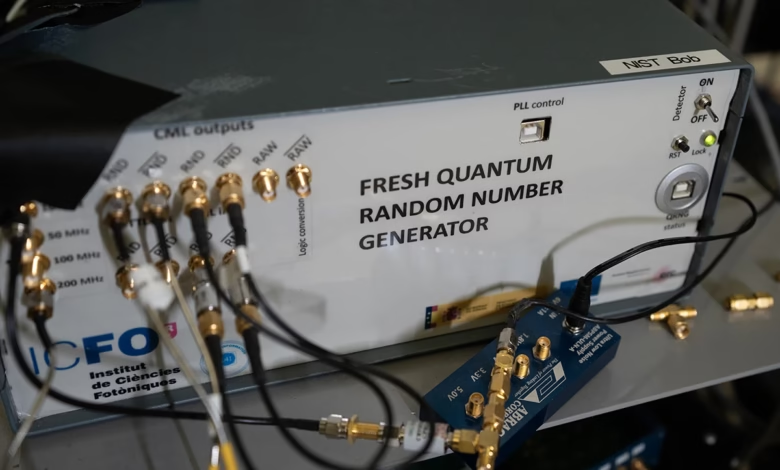Verify Quantum Randomness with CURBy’s Number Generator

▼ Summary
– NIST and the University of Colorado Boulder developed CURBy, a public service delivering certifiable random numbers using quantum mechanics.
– Unlike pseudo-random numbers, CURBy’s quantum-generated randomness is unpredictable and immune to manipulation, addressing security needs.
– The system works by measuring entangled photons’ polarizations, producing 512-bit strings of binary numbers at 250,000 measurements per second.
– CURBy’s transparency is ensured by the Twine protocol, allowing verification of each step and linking random bits to their origin via hashes.
– The service is free and publicly available, offering applications in cryptography, lotteries, and audits where true randomness is critical.
Quantum randomness has reached new heights with the Colorado University Randomness Beacon (CURBy), a groundbreaking public service developed by NIST and the University of Colorado Boulder. This system generates verifiably random numbers using quantum mechanics, providing an unprecedented level of unpredictability that traditional methods simply can’t match.
Security experts know that true randomness is critical, yet most systems rely on pseudo-random algorithms that can be reverse-engineered or manipulated. Even physical methods like dice rolls or atmospheric noise measurements can introduce bias. “Genuine randomness means no force in the universe could predict the outcome beforehand,” explains Krister Shalm, a physicist at NIST.
Unlike theoretical experiments, CURBy was designed for real-world use. “Our goal was to transform quantum research into a practical tool,” Shalm notes. The system operates continuously, producing thousands of random bit sequences monthly. During its initial 40-day test phase, it achieved a 99.7% success rate, generating usable randomness in 7,434 out of 7,454 attempts.
The process hinges on quantum entanglement. A specialized crystal creates pairs of entangled photons, which are then sent through optical fibers to separate labs. Their polarizations are measured at a staggering rate of 250,000 times per second. The raw data is processed at the University of Colorado Boulder into 512-bit binary strings, which are then published online for public access.
Transparency is a cornerstone of CURBy’s design. The team implemented the Twine protocol, a quantum-compatible verification tool resembling blockchain. Each random bit sequence includes a cryptographic hash, allowing users to trace its origin and confirm its integrity. This ensures the randomness remains tamper-proof and verifiable at every stage.
The system is built for scalability. Additional beacons could join the network, expanding the pool of certified, auditable randomness. “Unlike conventional generators, CURBy’s output can be directly validated for quality and origin,” Shalm emphasizes.
For cybersecurity applications, this represents a major leap forward. Organizations no longer need to depend on opaque hardware or proprietary algorithms: CURBy offers a transparent, government-backed solution rooted in quantum physics.
Gautam Kavuri, a graduate student involved in the project, highlights its broader impact. “We aimed to create something both scientifically advanced and genuinely useful,” he says. “NIST provides the freedom to pursue ambitious projects with real-world applications.”
From cryptography to public lotteries and financial audits, CURBy’s quantum-generated randomness ensures fairness and unpredictability where it matters most. Best of all, it’s freely available to the public, harnessing the fundamental laws of physics to deliver the purest form of randomness science can achieve.
(Source: HelpNet Security)